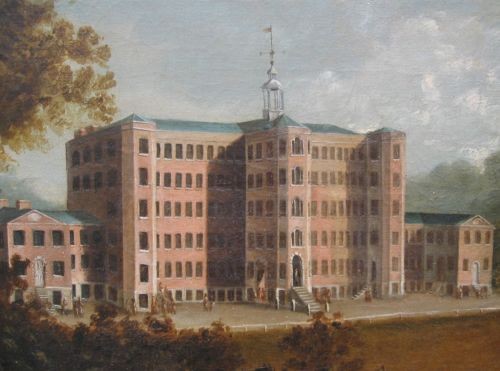A History of Stockport
- 5 Minutes
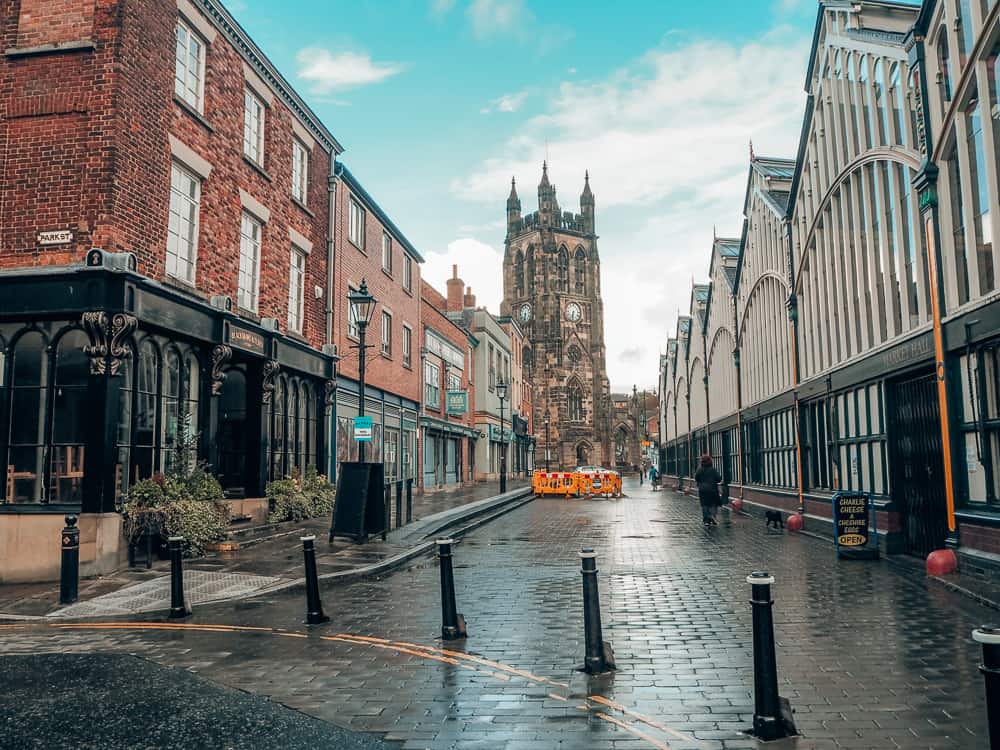
In 2017, I made Marple Bridge my home after visiting many places in south and east Manchester to find that goldilocks balance between rural escapism and access to the city. Having spent much of my life in Leicester and Oxford, two places with an enduring historic pedigree, I wondered how Stockport’s history compared. What I found in Stockport was a rich history stretching from prehistory through to the industrial revolution and an active local history community hell bent on deciphering and recording the past. Stockport may not have been a Roman town or an Anglo Saxon burgh, but its history is just as fascinating and raises important questions as to who are past neighbours were and how and where they lived.
In this article, I will explore the history of Stockport, from its early beginnings to the present day. Find out more about my SEO Stockport services.
Prehistoric Era
It is thought that humans returned to Britain around 15,000 years ago as the island was nearing the end of the last ice age and the glaciers that covered northern Britain retreated. The climate stabilised after the Younger Dryas and warmer, more predictable climate conditions attracted an influx of hunter gatherers from the European continent marking the start of the Mesolithic period. These hunter gatherers lived a subsistence lifestyle hunting animals and fish and foraging for wild vegetation; migrating to new areas as the seasons ebbed and flowed.
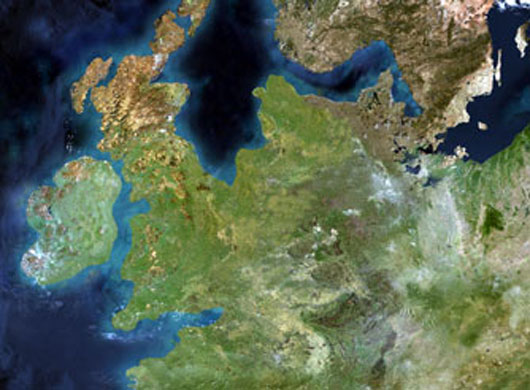
Some of the earliest evidence we have for human occupation in Mesolithic Stockport is in Mellor. Archaeologists excavating a suspected iron age hill fort in xxxx found an assemblage of flint flakes and bladed items, evidence of tool making activity some time in the Mesolithic. Perhaps these people came to Mellor in the summer following red deer and game and used the Mellor hill top as a temporary camp or resting place.
Agriculture was introduced to Britain between 5000BC and 4500BC and it took 2,000 years for arable and agrarian farming to largely replace the hunger gatherer way of life throughout the island. There remains much debate as to the nature of how the agricultural revolution spread across England, but a combination of cereal cultivation and domestic livestock farming would have likely been the main source of food for people living in the north west at this time.
Although human activity in Neolithic Stockport is poorly understood, a late neolithic flint chisel was found in Mellor Vicarage Gardens that some experts say may have been a burial offering. Like in many areas of Britain, the transient lifestyle, technologies, and cultures of prehistoric people have left little trace. The butchered remains of animals, waste and timber structures have long since rotted away leaving only stone tools for us to find or, if we’re lucky, impressions in the ground.

Bronze and Iron Age
The bronze age began around 2500 BC when people from the Beaker Culture migrated to Britain from Europe bringing with them the skills of metal refining and new types of pottery and flintwork. From around 2150 BC, people had discovered that mixing copper with a small quantity of tin produced bronze; a much harder material that produced stronger tools and weapons with sharper, more durable edges. However, stone tools still played their part in daily life given the value and relative scarcity of copper and bronze.
The bronze age people of Stockport took to burying their dead in mounds, barrows or circular cairns of which there are several examples in the area. Shaw Cairn on the summit of Mellor Moor is perhaps the most significant example where several cremation burials, flintwork and a rare amber necklace were found in xxxx.
The bowl barrow of ‘Brown Low’ resides nearby where an antiquarian in the early 19th century purportedly found a funerary urn, a preserved acorn and burnt stones during a casual excavation that would today be considered vandalism by modern archaeologists. Elsewhere in Stockport, excavations between Poynton and Bramhall in advance of the A6 Airport Relief Road construction exposed pottery and cremated human remains that were radiocarbon dated to the middle bronze age.
It is understood that bronze age people lived in small villages or communities next to prime agricultural areas with a preference for river valley settlement. Based on findings across Britain, they constructed circular dwellings made from timber posts, wattle-and-daub infill, and thatched roofs that required constant maintenance to keep the elements at bay. We have not yet located any bronze age houses or villages in Stockport or elsewhere in Greater Manchester, although we know they were active in the region for over a millennium.
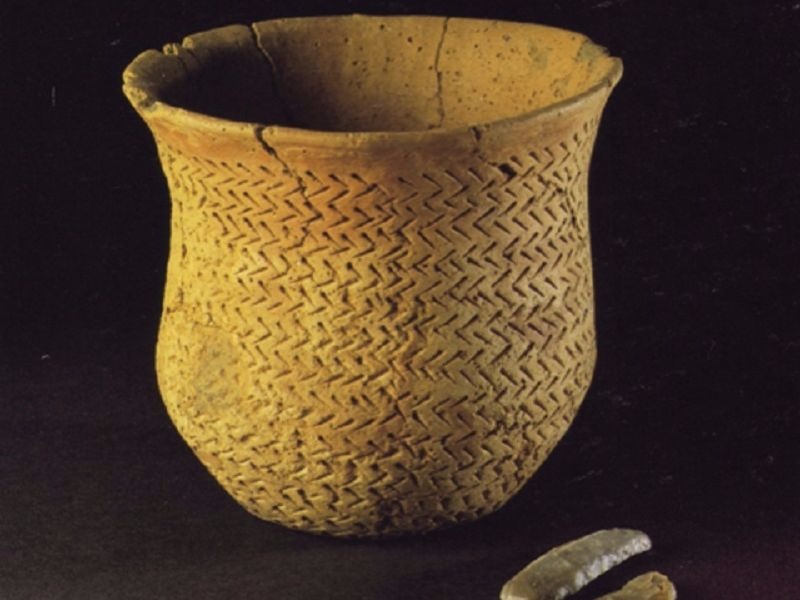
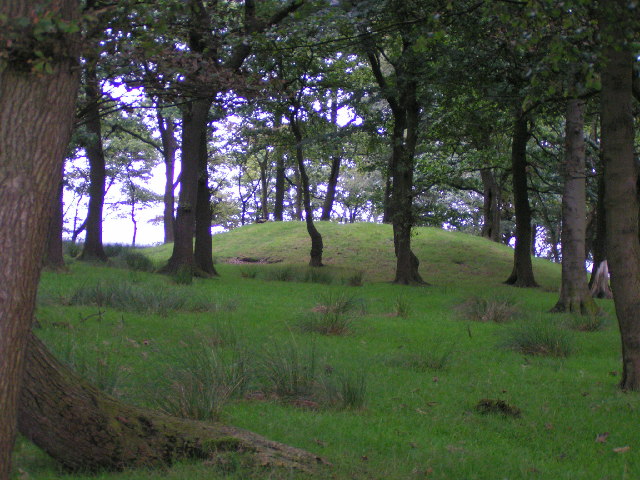
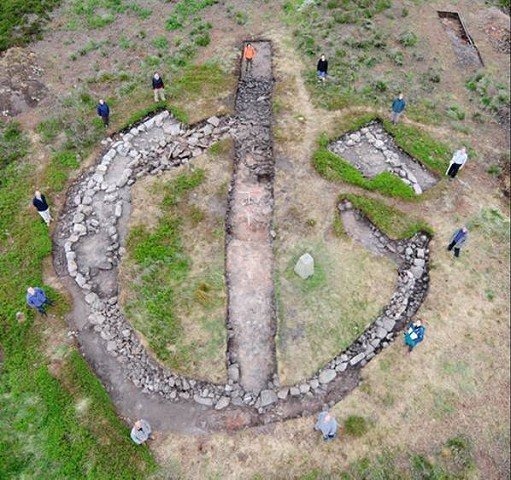
We see the start of the Iron Age in Stockport from roughly around 800BC when the first significant use of iron for weaponry and tools is found/detected? Tin and copper could be melted or cold-worked in simple furnaces; however, iron was more difficult to obtain from oxidised iron ores due to its higher melting point (1,205-1,370°C vs 913-1,082°C) and rigidity (lack of malleability?). How Iron Age Britons discovered the technology is not clear cut. However, there is evidence of ever closer ties between Britain and Continental Europe around this time with knowledge transfer likely taking place between traders and migrants moving to Britain.
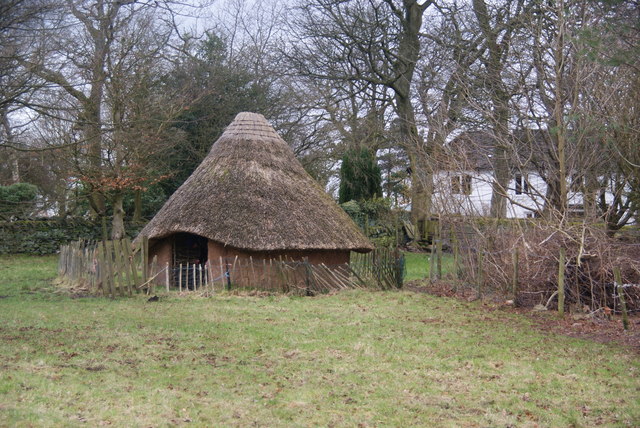
Perhaps the most obvious vestiges of Iron Age occupation in Stockport and its surrounds is the presence of hill forts that dot the landscape. Mellor hill fort was discovered in the 1990s and is the only hill fort in Greater Manchester and one of only four Iron Age settlements found in the county. The fort is surrounded by an inner ditch and an outer ditch; a massive undertaking from what must have been a relatively sizeable agricultural community farming the surrounding slopes. The people lived in small timber roundhouses and members of Mellor Archaeological Society built a replica roundhouse in xxxx which still stands today.
Roman Stockport
Roman forts were built at Manchester (latin), Buxton, and Glossop (Melandra) in the centuries following the 47AD? Invasion of Britain to capture, subdue and hold the north west region. There is little to no evidence of Roman occupation in Stockport despite its position close by a natural ford crossing the River Mersey. It is assumed that roads between Cheadle and Melandra and between Manchester and Buxton crossed close to the modern-day town centre but this has not been proven inconclusively.
There is evidence of long-term settlement at Mellor hill top between the 1st and 4th centuries AD and is perhaps the best example we have of Romano-British habitation in the Stockport borough. Archaeologists have found high status Roman pottery, brooches, coins and other artefacts that suggest a high-status individual or community lived on the site. Whether Mellor was a Roman military site, an outpost or simply resident(?) Britains adopting Roman culture and wares is not known.
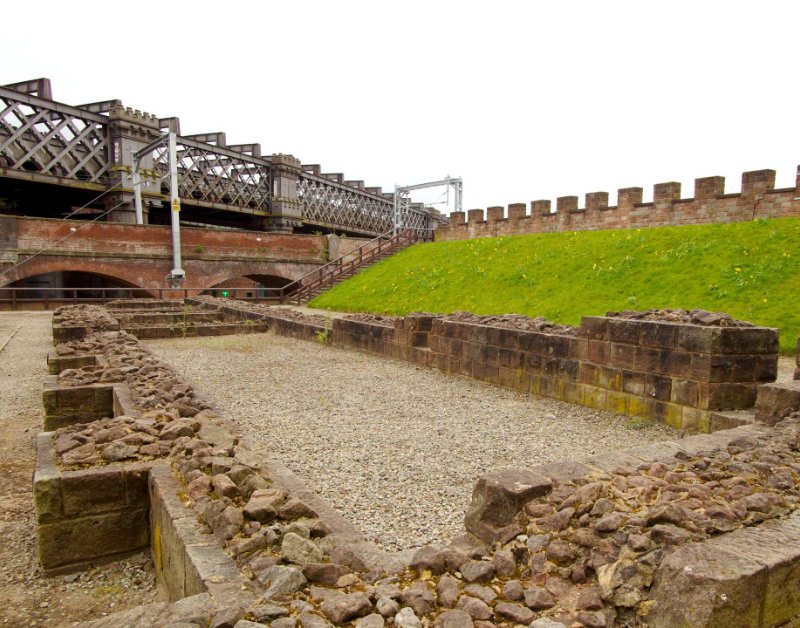
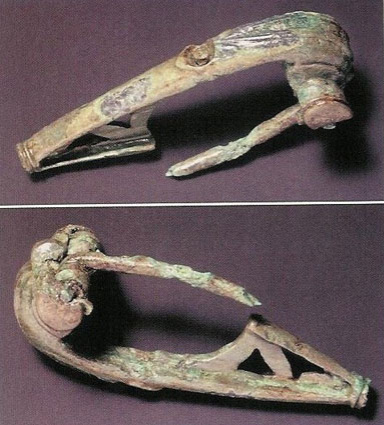
Medieval Stockport
Although Stockport is not listed in the 1086 Domesday Survey, the name ‘Stockport’ has its roots in Anglo Saxon or Old English(?) which suggests there was a settlement in the area prior to the Norman conquest in 1066. The name is derived from two words: ‘Stoc’ – meaning a castle or stockaded place, and ‘Port’ – meaning a wood…so castle in a wood! Or Old English stoc, a market place and port, a hamlet. Interestingly, Cheadle, Bramhall, Bredbury and Romiley were all mentioned in the survey – Stockport’s omission was once believed to be evidence that William the Conqueror’s ‘Harrying of the North’ campaigns ravaged the town so much that a survey of its value was not required.
Much of the landscape around Stockport at this time was heavily wooded with the Macclesfield Forest extending from the south up towards Romiley. Very little evidence of Anglo Saxon occupation (450-1066AD) has been found in Stockport Borough which deserves the Dark Age moniker. Although several coins from the reign of Anglo Saxon Kings Edmund (939-946) and Eadred (946-955) were found in Reddish Green in the 18th century, the finds are considered an isolated incident and not linked with any local habitation. A dark age indeed!
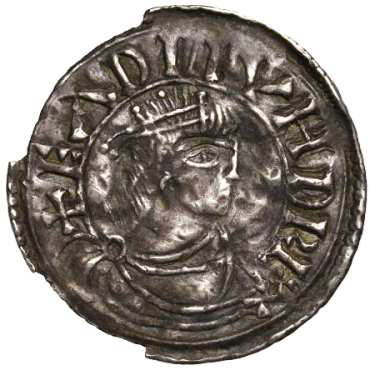
The first official mention or Stockport or ‘Stokeport’ was in 1170 and by 1173 there was a motte-and-bailey castle where Castle Yard is today which was mentioned in a chronicle of the reign of Henry II. The castle was next mentioned in the 16th(?) century when it was already in a ruinous state and the building was finally demolished in 18th century to make way for a new mill.
Stockport graduated from a village to a town in 1260 when the people of Stockport were granted a charter, giving them rights to hold weekly markets and annual fairs. Weekly markets and fairs were the main way that medieval people bought and sold goods, attracting farmers, artisans and craftsman from the surrounding countryside. The site of the modern marketplace has been in constant use for several centuries and remains a nucleus of trade in the town.
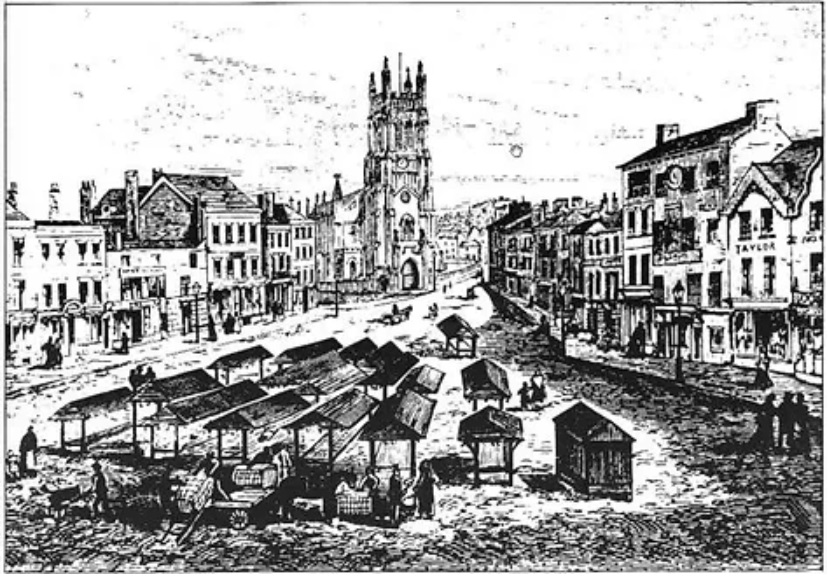
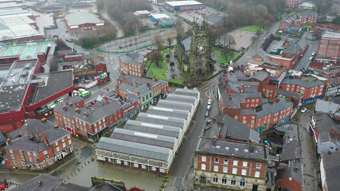
Industrial Stockport
Stockport had become a centre of small domestic industry by the 17th century, including weaving, spinning, leather working, hatting and button making. But it wasn’t until the 18th century that Stockport rapidly expanded and became a powerhouse in the cotton and silk manufacturing industry. Stockport’s first silk mill was constructed in 1732 on a bend on the River Mersey and employed 2,000 local people who suffered cycles of boom and bust over the proceeding decades.
Blessed with the Rivers Mersey, Etherow, Goyt and Tame, the Stockport Borough was well placed to harness the power of water and take full advantage of the expanding cotton processing industry in the late 18th century. Industrialists like Samuel Oldknow built large mills and developed new technologies that capitalised on water and steam power and employed many thousands of people. The thousands of Georgian and Victorian houses in Stockport are part of the legacy of the region’s industrial past.
